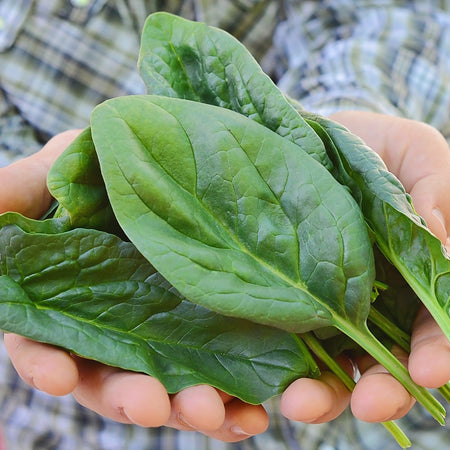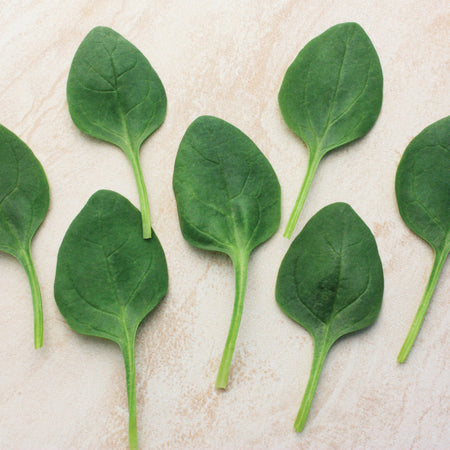LAKESIDE
Product Description:
| Soil Temp for Germ | 45–75°F |
| Seed Depth | ½" |
| Seed Spacing | 1" |
| Days to Emergence | 6–21 |
| Thin Plants to | 3–6" |
| Row Spacing | 12" |
| Fertilizer Needs | Low |
| Minimum Germination | 65% |
| Seeds per Gram | ≈ 80 |
| Seed Life | 1 year |
Spinacia oleracea The Northwest's favorable conditions for spinach production allow us to focus our selection criteria on flavor, vigor, and bolt and disease resistance. The highest-protein vegetable, leafy spinach greens boast an unmatched, synergistic complement of vitamins, minerals, flavonoids and carotenoids that when combined, protect eyesight, help prevent the buildup of cholesterol, and target cancer-causing free radicals.
Days to maturity are calculated from date of direct seeding.
Culture
• Optimum soil pH range is 6.5-7.5
• Spinach grows best during cooler weather of early spring and fall
• Soil temperature above 80°F can cause erratic germination
• Bolting is caused by rising temperatures, day length and water stress; see specific varieties for bolt resistance
• Apply 1/2 cup of TSC's Complete fertilizer per 5 row feet, and 1 inch of compost
Direct Sowing
• For baby spinach sow 20-25 seeds per foot in a 2 inch wide furrow, in rows 6 inches apart, thin to 1 inch
• Sow July—August for a fall crop
• Sow late-August for an overwintering crop
Insects & Diseases
• Common insects: Spinach leaf miners
• Insect control: Use row covers, spray eggs on underside of leaves with Pyrethrin or destroy any affected leaves and keep the surrounding area weeded
• Common diseases: See chart below
• Disease prevention: Plant in fertile soil and use a 3-4 year crop rotation
Harvest & Storage
• For baby greens, harvest at 3-4 inches
• Individual leaves may be harvested anytime
• Store at 36°F and 95% relative humidity
What is seed tape?
Seed tapes are perfectly straight rows of precisely spaced crops. No more having to thin seedlings! This biodegradable tape will plant a row 5 meters (16 feet, 5 inches) long. Simply lay it in a furrow and cover with a light layer of sifted compost or soil, water and wait. Save yourself a heap of planting time with these popular vegetable and herb staples.
KEY TO SPINACH DISEASE RESISTANCE AND TOLERANCE
HR indicates high resistance.
IR indicates intermediate resistance.
BM | Blue Mold
CMV | Cucumber Mosaic Virus
DM* | Downy Mildew
LM | Leaf Mold
WR | White Rust
* Numbers indicate specific disease race.




